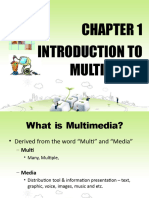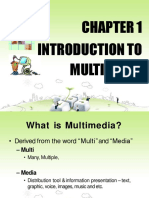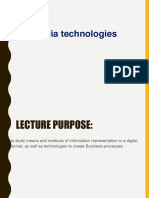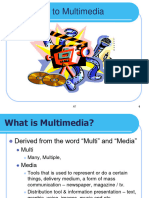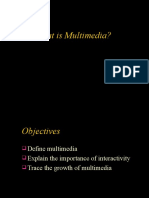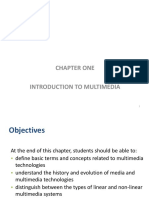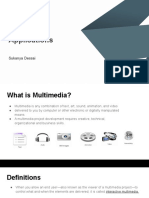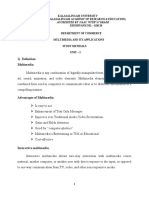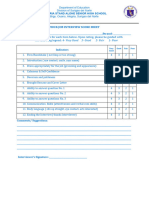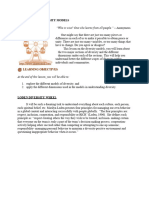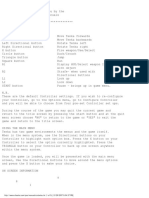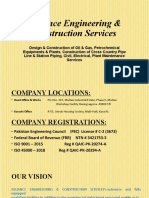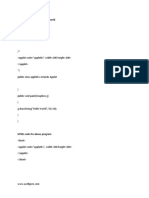0% found this document useful (0 votes)
21 views36 pagesChapter 1 Introduction To Multimedia
The document introduces multimedia, defining it as a combination of text, graphics, sound, animation, and video delivered interactively. It outlines the elements of multimedia, including text, graphics, audio, animation, and video, and distinguishes between linear and non-linear multimedia projects. Additionally, it discusses the importance and applications of multimedia across various fields such as business, education, entertainment, and public spaces.
Uploaded by
dawitabera1885Copyright
© © All Rights Reserved
We take content rights seriously. If you suspect this is your content, claim it here.
Available Formats
Download as PDF, TXT or read online on Scribd
0% found this document useful (0 votes)
21 views36 pagesChapter 1 Introduction To Multimedia
The document introduces multimedia, defining it as a combination of text, graphics, sound, animation, and video delivered interactively. It outlines the elements of multimedia, including text, graphics, audio, animation, and video, and distinguishes between linear and non-linear multimedia projects. Additionally, it discusses the importance and applications of multimedia across various fields such as business, education, entertainment, and public spaces.
Uploaded by
dawitabera1885Copyright
© © All Rights Reserved
We take content rights seriously. If you suspect this is your content, claim it here.
Available Formats
Download as PDF, TXT or read online on Scribd
/ 36



